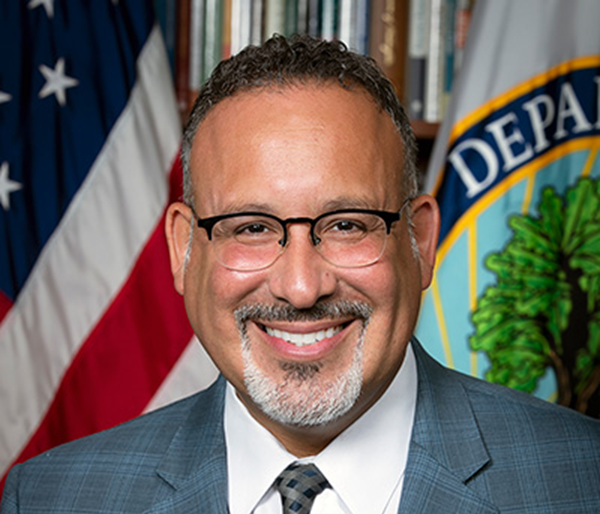Why 2 districts say moving to equitable grading gives students more hope – By Matt Zalaznick, District Administration
A shift to a more equitable grading in Nothern California is reducing students’ fear of failure and, proponent says, providing a clearer picture of the specific skills students have mastered.
While many districts overhauled the grading policies to account for the connectivity problems and the other challenges students have faced during COVID, a handful of K-12 leaders began the transition as a part of equity work that began years before the pandemic.
“Competency-based grading gives student hope,” says Jeffrey Tooker, deputy superintendent for educational services at the Placer Union High School District north of Sacramento. “Students who used to walk into class thinking they’re going to fail immediately now have hope that by the end of the course they can demonstrate mastery and pass and not have to retake.”
Competency-based grading jibes with standards- and mastery-based grading models that, in the most basic sense, aim to make it harder for students to get Ds and Fs, which can devastate learners academically and emotionally, Tooker says. Another key component to equitable grading is ensuring grades only take academic abilities into account without bonuses for extra credit or reductions for behavioral issues.

Students close to getting voting power on WA education board – By Mari Kanagy, Crosscut
When it comes to giving student advocates more say in public school systems, school leadership is all on board, so to speak. The 16 members of the Washington State Board of Education unanimously supported Senate Bill 5497, which will give student members of the board a vote in the decisions that impact their peers across the state.
The student vote bill passed out of the House on March 1 and was sent to the governor for his signature.
“Students are the ones that are experiencing the day-to-day repercussions of the policies that we are making, so we want to make sure their voice is heard,” said Bill Kallappa, chair of the Washington State Board of Education.
The bill extends voting authority to the board’s two student members, giving them a more substantial say on educational policy decided by the board, including adopting policy to oversee academic success in schools and making changes to graduation requirements. The legislation is expected to go into effect in early summer.

With Few Details But Big Ideas, Sec. Cardona Pushes Total Reimagining of Education – By Emily Tate, EdSurge
In the last two years, while schools experienced more disruption and strain than in almost any other time in recent memory, education leaders have been broadcasting one message, loud and clear and often: Education cannot go back to normal. This moment presents a chance to move forward, not go back. The upheaval of the pandemic can be an opportunity for positive change, if we let it.
As the weather warms and COVID cases plummet and classrooms return to full capacity, the moment of truth is near. And during a keynote panel at the SXSW EDU conference in Austin, Texas, on Wednesday, Education Secretary Miguel Cardona made sure to drill home the message to the hundreds of educators seated before him.
“We're closer to a reset in education than ever before. We've already been disrupted,” said Cardona, who worked as an educator and administrator in Connecticut before becoming Secretary in early 2021. “So why are we building it back the way it was when it didn't work for everybody?”
He added: “I want to make sure that as we see now, masks off and things are starting to look normal, that we do not lose our sense of urgency around not only the gaps that existed before, but the gaps that were made worse. So we need to really double down.”

Food and staff shortages are still vexing school lunch programs. Costs may keep rising, too – By Kalyn Belsha, Chalkbeat
School meal programs have faced a host of challenges this year. Staples like chicken, pizza, and muffins are hard to come by. Food deliveries often arrive late, or not at all. There’s still a shortage of cooks and drivers. Inflation is pushing costs up.
Now, schools may be faced with another test: the end of federal waivers that have kept meal costs down and made it easier to serve students food during the pandemic. Their omission from the latest federal budget deal has www.politico.com/news/2022/03/09/free-school-meals-end-mcconnell-opposit...">https://www.politico.com/news/2022/03/09/free-school-meals-end-mcconnell...">schools bracing for costs to increase next year and scrambling to plan their summer meal programs.
“School nutrition directors are really worried about what happens next, summer food sponsors are really worried about how they’re going to operate their programs,” said Crystal FitzSimons, the director of school programs for the nonprofit Food Research & Action Center. “We think it’s going to be a crisis.”
Early in the pandemic, federal officials issued several waivers that allowed schools to serve meals in ways they typically wouldn’t be able to under federal rules. Those allowances, www.fns.usda.gov/cn/covid-19-child-nutrition-response-84">https://www.fns.usda.gov/cn/covid-19-child-nutrition-response-84">extended through this school year, permitted schools to continue to do things like hand out grab-and-go meals when students had to quarantine or temporarily return to virtual learning, and serve meals in classrooms to allow for more social distancing.












